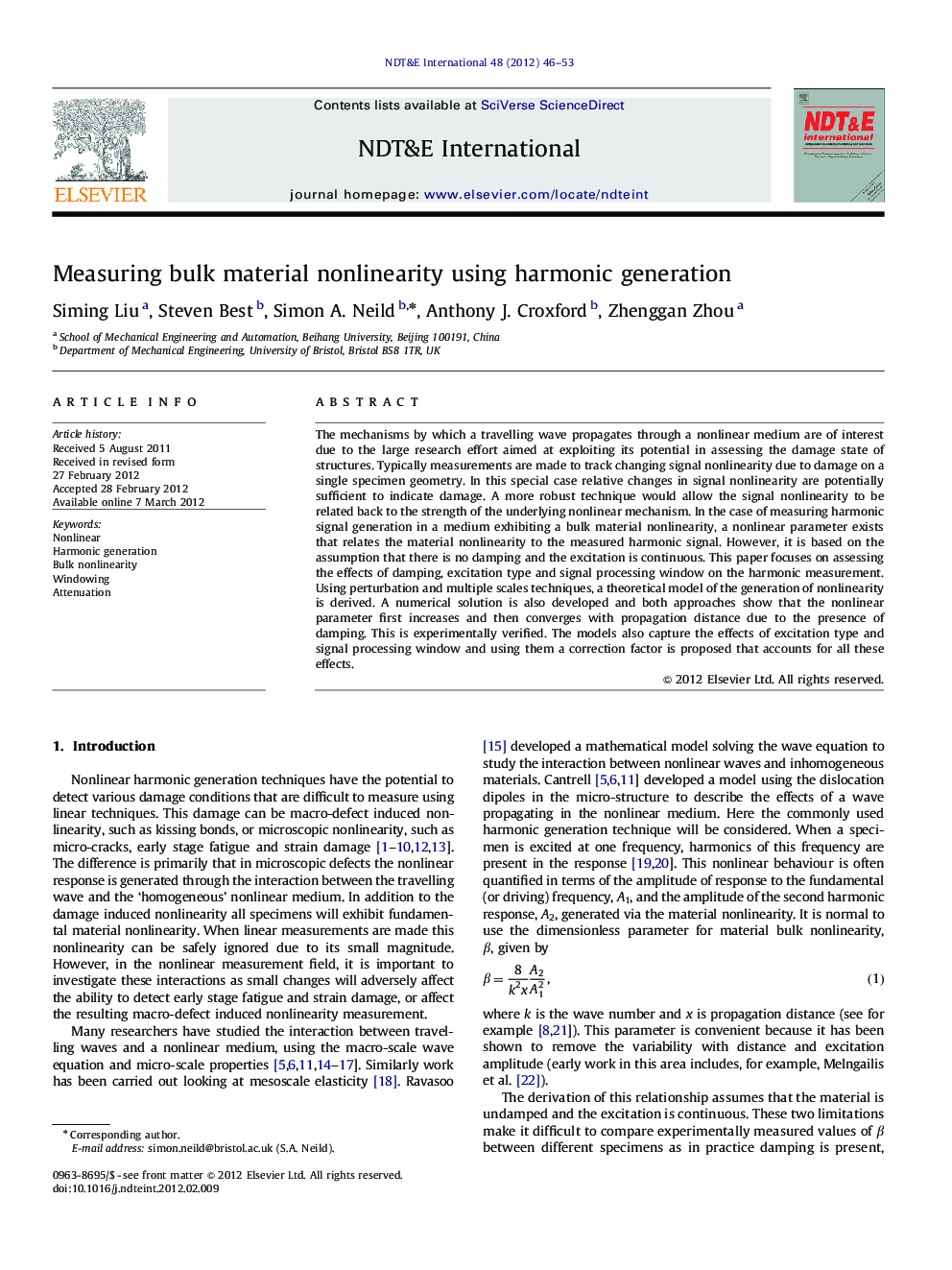| Article ID | Journal | Published Year | Pages | File Type |
|---|---|---|---|---|
| 295279 | NDT & E International | 2012 | 8 Pages |
The mechanisms by which a travelling wave propagates through a nonlinear medium are of interest due to the large research effort aimed at exploiting its potential in assessing the damage state of structures. Typically measurements are made to track changing signal nonlinearity due to damage on a single specimen geometry. In this special case relative changes in signal nonlinearity are potentially sufficient to indicate damage. A more robust technique would allow the signal nonlinearity to be related back to the strength of the underlying nonlinear mechanism. In the case of measuring harmonic signal generation in a medium exhibiting a bulk material nonlinearity, a nonlinear parameter exists that relates the material nonlinearity to the measured harmonic signal. However, it is based on the assumption that there is no damping and the excitation is continuous. This paper focuses on assessing the effects of damping, excitation type and signal processing window on the harmonic measurement. Using perturbation and multiple scales techniques, a theoretical model of the generation of nonlinearity is derived. A numerical solution is also developed and both approaches show that the nonlinear parameter first increases and then converges with propagation distance due to the presence of damping. This is experimentally verified. The models also capture the effects of excitation type and signal processing window and using them a correction factor is proposed that accounts for all these effects.
